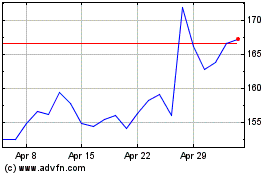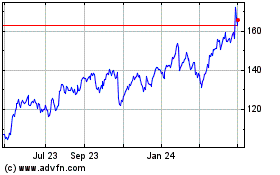By David Pierce
The age of the annual upgrade is about over. For decades, the
only way to get the latest and greatest in tech was to buy new
stuff: a new computer with that color screen, a new CD-ROM drive, a
new version of "Halo." Now "Fortnite" drops new weapons and
characters every few weeks, your Tesla gains abilities while you
sleep and your Alexa speaker gets smarter pretty much
constantly.
When Google announced the new Pixel 3, the latest in the
company's lineup of smartphones designed to compete with Apple
iPhones and Samsung Galaxy phones, it marketed the phone's many
nifty new features. Its camera knows when you're smiling! It
screens your calls! Fun augmented-reality Donald Glover! Then it
revealed the best news of all: Most of what makes the Pixel 3 great
is also headed to older Pixels -- and likely to other Android
devices as well.
Google really only restated the obvious: Hardware doesn't really
matter anymore, especially since most of our devices have more
power than we're using. It might again when we start wearing AR
glasses and hailing self-flying cars, but for now, software is
everything.
If you're in the market for a new phone, the Pixel 3 is the best
Android device on the market. It even bests the iPhone in a number
of important ways. If you're not looking for a new device -- and if
you bought a phone in the past year or so, why would you? -- you
should still be glad the Pixel 3 exists. Because it'll probably
make your phone better, too.
Pick a size
Pixel 3 actually refers to two devices. There's the slick
5.5-inch handset that's a bit smaller and lighter than the iPhone
XS, and there's the behemoth 6.3-inch XL version. (They start at
$799 and $899, respectively.) The smaller phone has big bezels on
top and bottom, while the larger one has a fat iPhone-like notch
atop its screen. Other than screen and battery sizes, the Pixel 3
and Pixel 3 XL are identical.
The Pixel 3 may not be hardware focused, but I do like the way
the phone looks and feels. It's not quite the dense, glassy gem the
iPhone is, but it's soft and inviting -- rather nice looking in its
own right. Otherwise, this waterproof, headphone jack-less
rectangle ticks a lot of boxes:
* Processor: Fast
* Screen: Vivid and colorful
* Camera: Better than ever, especially for selfies
* Battery life: Usually not dead before bedtime (but still not
long enough)
* Fingerprint reader: On the back where I like it (though I do
wish the phone had face recognition)
Strangely enough, my favorite part of the new phone might be its
wireless charging accessory: Google's $79 Pixel Stand turns the
phone into a Google Home of sorts, displaying helpful information
and taking voice commands while it fills up.
Helping hand
There's no more important Pixel feature than Assistant, Google's
chatty virtual helper. It can take a selfie, answer questions,
start music, show weather and calendars, turn off the lights, open
settings, find an app and lots more. On the Pixel 3, it can even
screen your calls: Tap a button and Google picks up the call for
you, letting the person know you're not available and transcribing
on your screen what they say in return. It's impressive, and deeply
weird.
Of course, the whole point of Assistant is that it works
everywhere. That call-screening feature is coming to other Pixels
next month, and likely other Android devices soon, too. I like
Assistant far better than Siri, but you don't need the Pixel to get
it.
When the Assistant meets the Pixel's camera, the phone really
shines. There's Google Lens, the feature that essentially turns the
camera into a search box -- it figures out what's in the frame and
tells you more about it. Eventually Alphabet Inc.'s Google plans to
offer augmented navigation and information about landmarks and
businesses. Even now, it's handy to point my camera at a business
card and immediately get a prompt to dial the number on it.
The Pixel 3 has a Photobooth mode, which is supposed to snap a
shot when you're smiling or making a silly face. It's cool when it
works, but too inconsistent. Another feature, called Top Shot, does
better: It snaps a series of photos and then attempts to choose the
best one to show you.
Even sans all the fancy features, the Pixel 3 takes terrific
photos and video. My photos, particularly in low light, often came
out with better color and crisper details than the iPhone XS and
Galaxy Note 9. The Pixel 3's portrait mode now offers some of the
clever lighting and refocusing features you'll find on recent
iPhones, and it works just as well. In general, the phone favors
something in between Apple's accurate-but-blah shots and Samsung's
life-in-technicolor approach. It's vibrant and rich, but still
feels real.
Not every picture came out perfect. There's only one camera on
the back, so it can't replicate the iPhone or Note's second-lens
optical zoom. Also, when Google's algorithms make occasional
mistakes, the results can be too dark or imbalanced.
The Pixel 3 doesn't have some of the Note 9's excellent
additional features, but it doesn't have its overcomplicated
software, either. And if you're an iPhone fan, the Pixel 3's camera
probably isn't enough to make you turn off iMessage and make the
leap. But if you're an Android user looking for an upgrade, your
choice is to get this or wait until the things that make this phone
great appear in other Android phones -- maybe even the one that's
already in your pocket.
For more WSJ Technology analysis, reviews, advice and headlines,
sign up for our weekly newsletter.
(END) Dow Jones Newswires
October 15, 2018 12:14 ET (16:14 GMT)
Copyright (c) 2018 Dow Jones & Company, Inc.
Alphabet (NASDAQ:GOOGL)
Historical Stock Chart
From Mar 2024 to Apr 2024

Alphabet (NASDAQ:GOOGL)
Historical Stock Chart
From Apr 2023 to Apr 2024
